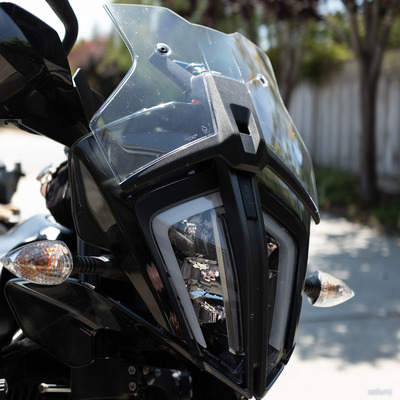#photography nerditry:
Dust is the enemy, especially on digital sensors. Prevention is easier than cleaning.
-
I keep lens and body caps on until the last possible moment, and use a filtered blower bulb as the last step whenever the sensor or rear lens element is exposed. Always.
-
Cleaning lenses: first use a blower bulb. If that fails, Pancro cleaner with Kimwipes, in a circular motion.
-
Sensors: First step is the blower bulb. If that fails, VisibleDust solution with their swap sticks.
@mattblaze@federate.social I use an intermediate step for sensor dust. First blower. If there is still dust I use a sensor brush. Only the if there is still something in the sensor do I break out the wet swabs. It is rare for me to need the swabs. Perhaps I’ve been lucky.
@mattblaze@federate.social and if your camera supports the feature, as new Canon mirrorless models do, make sure that the camera is set to close the shutter when you turn it off. Off. And then when you’re changing lenses, turn it off first to keep the sensor protected.
@stshank@mstdn.social also the auto-vibrate feature is very effective, if your camera has it.
Battery compartment in my x700 had mild barely visible corrosion. It didnt turn on at first so I got ready to change the bulk caps but decided to give it a quick clean with a swab and what do you know, no swap needed
Still full of dust tho
The trick for wet cleaning sensors is to do it in a single pass across the sensor, and use more pressure on the swab than you think you need. If it fails, do it again, across the entire sensor.
It’s VERY hard to do permanent damage to the protective glass on a sensor with a cleaning swab, so don’t be shy.
@mattblaze@federate.social Co-signed. A recent full-spectrum conversion offered a chance to inspect the glass UV/IR filter after years of use and cleaning, and whatever flaws there might be were too small to notice.
@mattblaze@federate.social I used to think mirrorless cameras would be a pain to clean vs DSLRs, but my mirrorless is basically always clean and my DSLR always has a stubborn spot or two. I blame it on how deep the sensor is in the DSLR.
A little bit of dust on the front of the lens is usually no big deal. But dust on the sensor is almost always noticeable in photos. Dust on the rear lens element can migrate to the sensor while you’re not looking.
Again, prevention is easier and faster than wet cleaning.
@mattblaze@federate.social sensor cleaning always terrifies me, even though Ive never really had a problem 😬
@mattblaze@federate.social, you don’t recommend lenspens?
@skandhurkat@masto.ai my experience is they end up being like playing whack-a-mole.
@mattblaze@federate.social good to know, thanks







